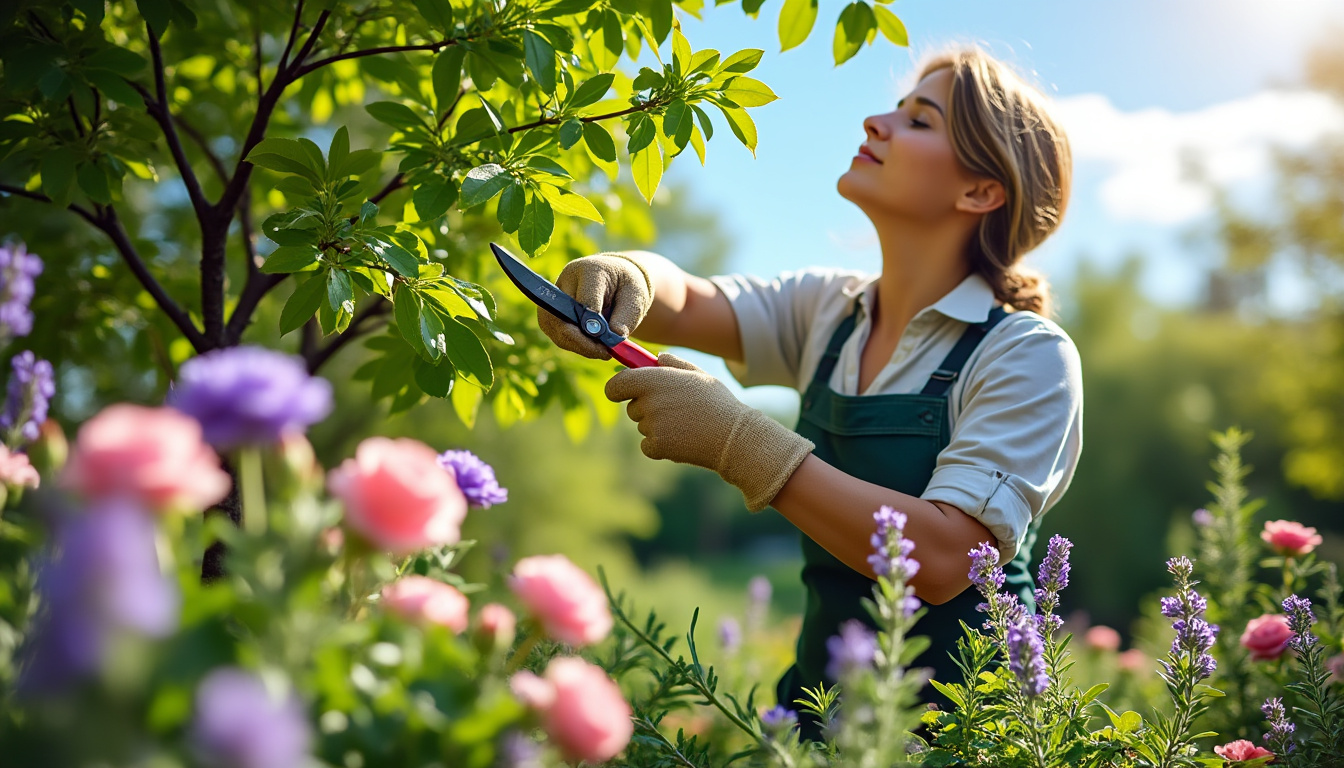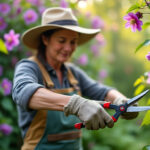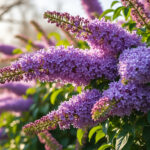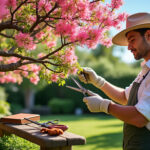In the realm of gardening, knowledge regarding the optimal care for prized plants can significantly impact their aesthetic and health. The bay tree, known for its aromatic leaves and impressive stature, is no exception. Understanding the ideal timing for pruning these trees is essential not only for their growth but also for preserving their beauty throughout the seasons. This article explores the intricacies of bay tree pruning, focusing on the best times and techniques to ensure optimal growth.
- Understanding Bay Trees and Their Growth Patterns
- Best Timing for Pruning Bay Trees
- Essential Tools for Pruning Bay Trees
- Step-by-Step Guide to Pruning Bay Trees
- Aftercare and Maintenance of Pruned Bay Trees
Understanding Bay Trees and Their Growth Patterns
The bay tree, scientifically known as Laurus nobilis, thrives in various growing conditions and can reach heights of up to 30 feet (9 meters). These trees are renowned for their lush foliage and can be shaped into various forms, enhancing their decorative appeal in gardens. While bay trees possess remarkable resilience and can adapt to numerous environmental factors, certain practices in care, particularly pruning, can optimize their growth and health.
Several factors influence the growth rate and health of bay trees:
- Climate and Environment: Bay trees flourish in Mediterranean climates, characterized by warm, dry summers and cooler, moist winters. Proper exposure to these seasonal changes is vital for their growth.
- Soil Quality: The trees prefer well-draining soil rich in organic material. Nutrient-rich soil not only boosts growth but also supports overall vitality.
- Watering Practices: While bay trees are drought-resistant, regular watering during dry spells promotes healthy growth. However, overwatering can lead to root rot and other health issues.
- Winter Resilience: Although bay trees are typically hardy, winter damage can occur. Signs include browning leaves and weak branches, which often necessitate pruning to remove unappealing foliage.
Proper care can help transition bay trees from large shrubs requiring minimal pruning to beautifully shaped ornamental trees that command attention in any garden. The complexity of growth patterns in bay trees makes the knowledge of their pruning needs crucial for any gardener aiming for excellence.
Best Timing for Pruning Bay Trees
Pruning bay trees involves strategic timing, as the right season can promote vigorous growth and recovery. The best time to prune bay trees is during late spring, often coinciding with their peak growing season. At this stage, the trees are better equipped to heal from pruning cuts, and the potential for new growth is maximized.
Key timings for pruning include:
- Late Spring (April to May): This is the primary pruning window. Heavy pruning can commence to reshape the tree or remove damaged branches.
- Mid-Summer (July to August): A lighter trim can be performed to refine the tree’s form and manage new growth. Pruning during this period encourages an aesthetic silhouette without hindering growth.
- Early Fall (August): By this time, it is crucial to complete any significant pruning. Late-season cuts may hinder the growth of new shoots before dormancy sets in as cooler weather approaches.
Winter pruning is generally avoided as the trees are in a dormant state, making recovery slower and risking stress on branches. Typically, the best approach to pruning aligns with the active growth phases within the season, enhancing recovery and promoting robust foliage in subsequent growing seasons.
| Pruning Time | Purpose | Recommended Actions |
|---|---|---|
| Late Spring | Major shaping and addressing damages | Severe pruning as needed |
| Mid-Summer | Refinement | Light trimming of new shoots |
| Early Fall | Final touch-ups | Complete all significant cuts |
Essential Tools for Pruning Bay Trees
Equipping oneself with the right tools is paramount to ensuring effective pruning of bay trees. The quality of the tools used directly impacts the precision of cuts made and the overall health of the tree post-pruning. Here is a basic checklist of tools needed for pruning:
- Pruning Shears: Ideal for small branches (up to 1 inch thick), ensuring clean cuts that promote healing.
- Bypass Loppers: For branches thicker than those manageable by shears, loppers assist in making cuts without injuring the tree.
- Pruning Saw: This tool comes in handy for larger branches, ensuring effective cutting without leaving jagged edges.
- Gloves: Protect hands from sharp foliage and ensure a comfortable grip during pruning tasks.
- Sturdy Ladder: For those tall bay trees, a ladder offers the necessary height to access upper branches safely.
Acquiring quality tools from reputable brands like Fiskars, Gardena, or from stores like Home Depot or Lowe’s ensures durability and effectiveness while demonstrating a commitment to the tree’s health. Regular maintenance of these tools, including sharpening and cleaning, prolongs their lifespan and retains their efficacy.
| Tool Type | Purpose | Recommended Brands |
|---|---|---|
| Pruning Shears | Trim small branches | Fiskars, Gardena |
| Bypass Loppers | Cut larger branches | Miracle-Gro, Dobbies |
| Pruning Saw | Handle thick branches | Thompson & Morgan |
When to plant Charlotte potatoes for optimal growth
Step-by-Step Guide to Pruning Bay Trees
Executing proper pruning techniques is vital for ensuring a bay tree’s aesthetics and health. Following these steps can help maximize the results of pruning:
- Evaluate the Tree: Assess the tree’s overall health and identify areas needing attention, including dead or damaged branches.
- Plan Your Cuts: Develop a strategy for cutting. Determine the desired shape—be it a perfect sphere or a more natural form.
- Begin Pruning: Use the designated tools to make your cuts. Focus on branches that obstruct healthy growth or compromise the shape of the tree.
- Make Precise Cuts: To promote healing, ensure cuts are clean and made above a bud or leaf node directing growth outward.
- Maintain Balance: Remove approximately one-third or less of the total foliage per session to avoid stressing the tree.
Special attention should be given to containers when dealing with bay trees. Ensure container plants are kept within manageable height (ideally no more than 135cm/4ft 6in) for ease of pruning. Beyond aesthetics, light pruning helps adapt to the limited growth environment, promoting healthy regrowth.
| Step | Action | Tips |
|---|---|---|
| 1 | Evaluate the Tree | Look for dead or crossing branches |
| 2 | Plan Your Cuts | Sketch or visualize desired shape |
| 3 | Begin Pruning | Make cuts at an angle away from the bark |
| 4 | Make Precise Cuts | Focus on healthy buds for direction |
| 5 | Maintain Balance | Don’t remove more than 1/3 of foliage |
Aftercare and Maintenance of Pruned Bay Trees
After pruning, ensuring the bay tree’s recovery and continued health is crucial. Implementing a proper care regime can significantly enhance its growth and vitality:
- Hydration: Water the tree adequately post-pruning, particularly during hot spells, to curb stress effects.
- Nutritional Support: Applying a balanced fertilizer formulated for bay trees promotes vigorous growth and recovery.
- Monitoring: Keep a close watch for signs of stress post-pruning, including wilting or browning leaves, which may indicate the need for additional care.
- Plan Future Pruning: Document pruning dates and methods used to track health and growth patterns for future sessions.
Regular maintenance, including periodic checks on soil drainage and exposure to wind, will ensure that the bay tree remains a vibrant addition to any outdoor space. Engaging with local gardening communities and resources such as The Royal Horticultural Society or BBC Gardening can furnish further knowledge and support for garden enthusiasts.
| Aftercare Action | Purpose | Best Practices |
|---|---|---|
| Hydration | Prevent stress | Water thoroughly |
| Nutritional Support | Boost recovery | Use balanced fertilizer |
| Monitoring | Identify issues early | Observe for wilting |
| Plan Future Pruning | Ensure consistent health | Keep a pruning diary |
Frequently Asked Questions
Understanding the intricacies of bay tree pruning can lead to numerous inquiries. Below are some common questions:
- When is the best time to prune bay trees? Late spring is ideal for major pruning, followed by a light trim in mid-summer.
- Should I remove brown leaves from a bay tree? Yes, clear away dead or damaged foliage to encourage healthy growth.
- How often should I prune my bay tree? Annual pruning is recommended, preferably from late spring to mid-summer.
- How much can I prune at one time? Limit cuts to one-quarter of the tree to prevent stress.
















